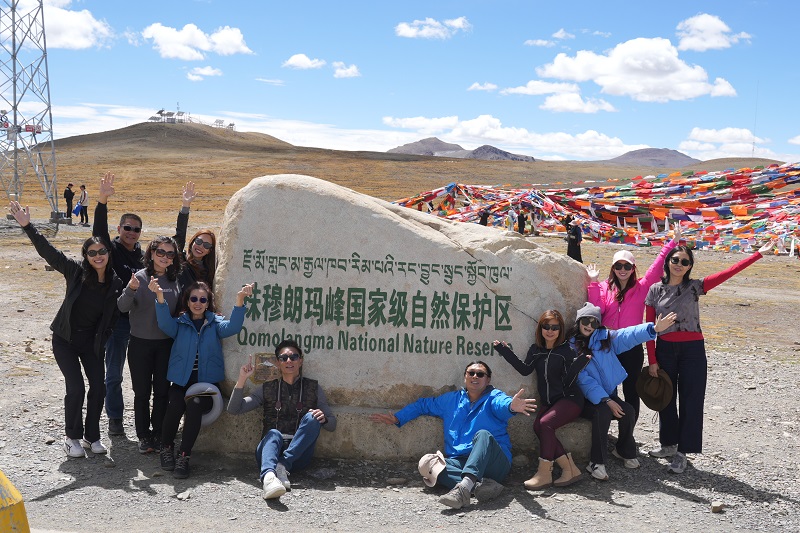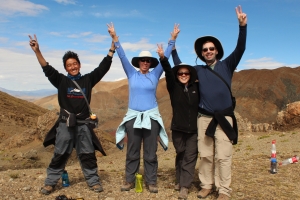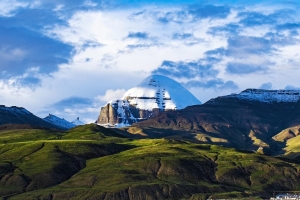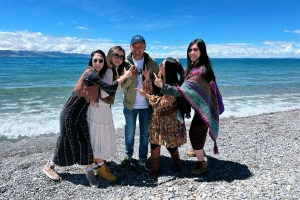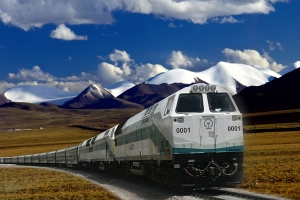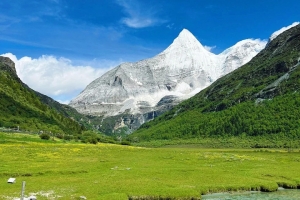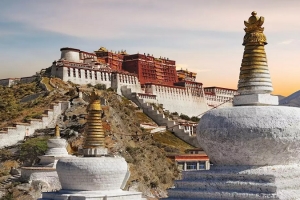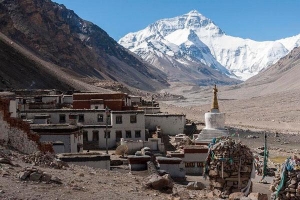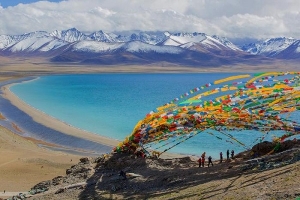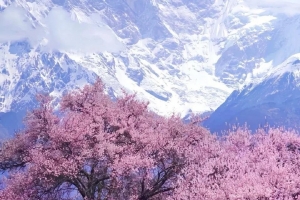Tibet has long stirred the American imagination—evoking visions of snow-covered peaks, saffron-robed monks, and remote monasteries clinging to the edges of cliffs. For those who crave both cultural depth and breathtaking landscapes, Tibet offers a truly singular travel experience. But traveling to this high-altitude region isn’t quite as spontaneous as hopping a flight to Paris. Americans need to plan carefully, and that’s exactly what this guide is here to help with.
Understanding Tibet’s Unique Status
Tibet is an autonomous region of the People’s Republic of China, and all foreign visitors—including Americans—must follow strict protocols to enter. This is not your standard backpacker destination. You’ll need a Chinese visa first, followed by a Tibet Travel Permit, which must be arranged through a licensed Chinese travel agency. Independent travel is not allowed; you must join a pre-arranged tour or hire a private guide.
Though this may sound limiting, the silver lining is that your logistics, accommodation, and transportation are all handled for you—ideal if you’d rather focus on the views than on bus timetables.
When to Visit Tibet
The best time to visit Tibet is between April and October, when the weather is relatively mild and the high mountain passes are open. Summer months (June to August) are warmest but can be crowded and occasionally rainy. Autumn, especially September and October, is considered peak season for stunning mountain visibility and cultural festivals.
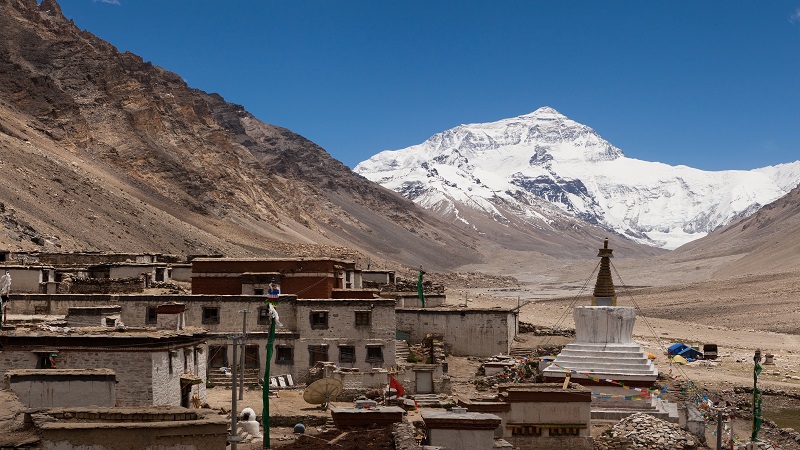
Rongbuk Monastery and Mount Everest
Avoid visiting around Chinese national holidays, especially Golden Week (early October), when domestic travel surges.
Getting There from the United States
There are no direct flights from the United States to Tibet. Most American travelers fly to a major Chinese city—typically Beijing, Chengdu, Shanghai, or Xi’an—then transfer to Lhasa via a domestic flight or take the Qinghai-Tibet Railway, the highest railway line in the world. The train is slower (about 20-40 hours depending on departure city) but offers unforgettable alpine views and helps your body gradually adjust to the altitude.
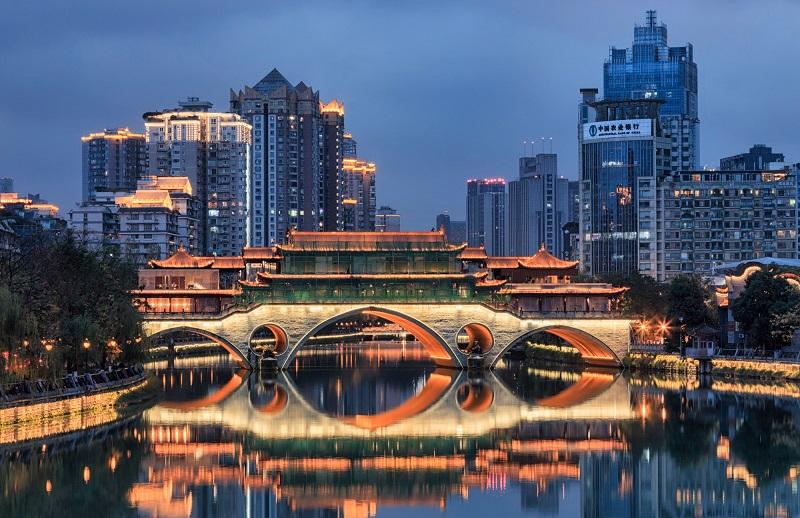
Anshun Bridge in Chengdu
Acclimating to High Altitude
Tibet’s capital, Lhasa, sits at 11,500 feet (3,500 meters), and many areas you’ll visit later—like Everest Base Camp or the sacred Mount Kailash—are even higher. Americans used to sea level or low-altitude living may be hit hard by altitude sickness if unprepared.
Tips for staying healthy:
-
Spend at least 2–3 days acclimatizing in Lhasa before heading higher.
-
Stay hydrated, eat light, and avoid alcohol.

High Altitude Sickness Symptoms
-
Talk to your doctor about altitude sickness medication like acetazolamide (Diamox) before you leave the States.
-
Move slowly and listen to your body—this isn’t the place for sprinting up staircases.
Top Places to Visit
Lhasa
Lhasa is the spiritual and political heart of Tibet. Don’t miss the Potala Palace, once the winter residence of the Dalai Lama and a masterpiece of Tibetan architecture. Also visit the Jokhang Temple, considered the most sacred temple in Tibetan Buddhism, and wander around the Barkhor Street pilgrimage circuit.

Potala Palace
Yamdrok Lake
A few hours outside Lhasa lies the turquoise Yamdrok Lake, one of the holiest in Tibet. Surrounded by snow-capped mountains and traditional villages, this is a great day trip for photography, picnicking, and soaking in the serenity.
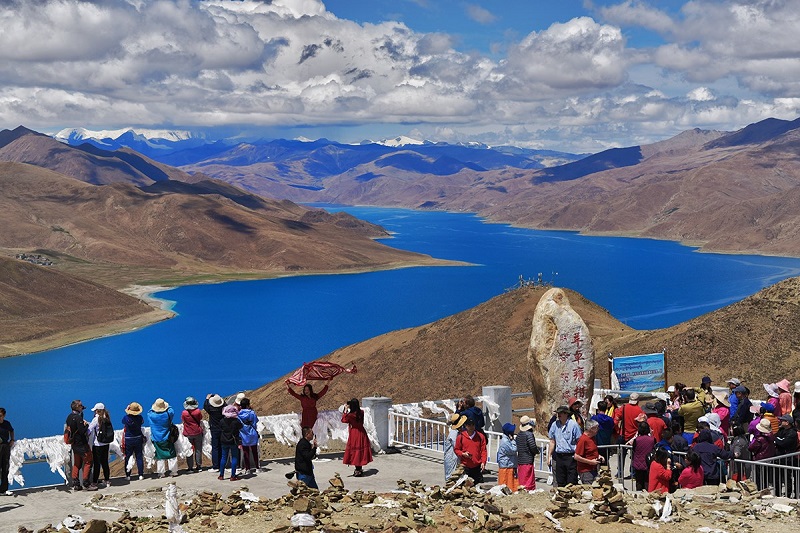
Yamdrok Lake
Shigatse and the Tashilhunpo Monastery
As Tibet’s second-largest city, Shigatse is known for the Tashilhunpo Monastery, seat of the Panchen Lama. This city is also a staging ground for longer excursions toward Mount Everest.
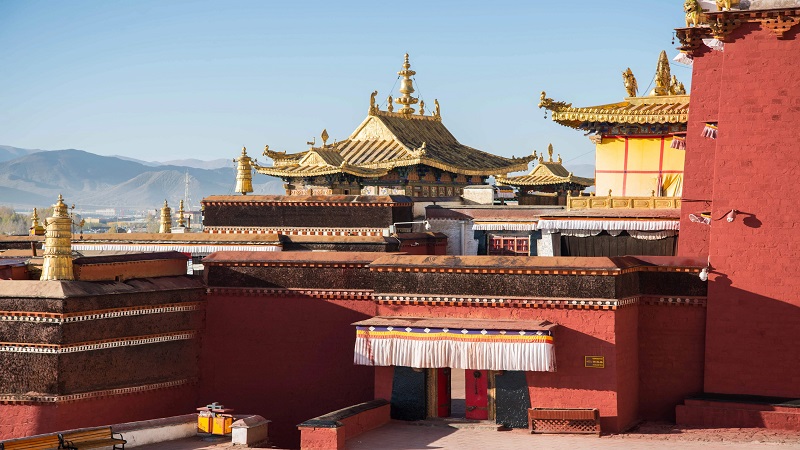
Tashilhunpo Monastery
Mount Everest Base Camp (EBC)
American thrill-seekers, rejoice: you can stand in the shadow of Mount Everest, the highest point on Earth. Reaching Tibet-side EBC requires at least a 7- to 10-day overland tour, and the route itself is a visual feast of vast plateaus and towering peaks.
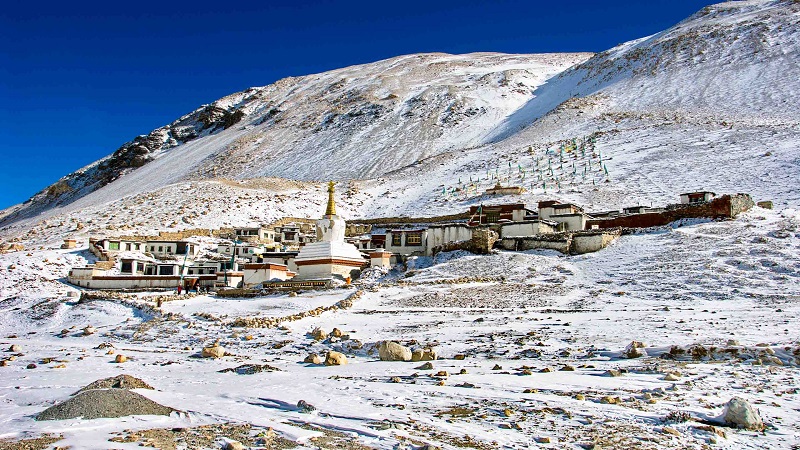
Rongbuk Monastery next to the Everest Base Camp
Mount Kailash and Lake Manasarovar
For the spiritually inclined or trekking enthusiasts, Mount Kailash is the ultimate pilgrimage site. The 52-kilometre kora (circumambulation) is a physically challenging but spiritually transformative hike.

Mount Kailash
Culture and Etiquette
Tibetan culture is deeply rooted in Buddhism, and visitors should tread with respect. When entering temples:
-
Remove hats and sunglasses.
-
Walk clockwise around shrines unless instructed otherwise.
-
Never touch Buddha statues or monks unless invited.
Photography inside religious sites is often prohibited or requires a fee—always ask your guide or host first. Also, it’s best to avoid sensitive political conversations with locals, for their safety as much as your own.
What to Pack
Tibet’s weather can be unpredictable. Even in summer, nights are cold. Here’s what you’ll want:
-
Layered clothing: base layers, fleece, windproof jacket
-
Sunscreen and lip balm (the UV rays are intense at altitude)
-
A refillable water bottle
-
Power adapter for Chinese plugs (Type A, C, or I)
-
Snacks—food in rural Tibet can be basic, so a stash of granola bars never hurts
-
A basic first aid kit, including altitude medication
Travel Costs and Money
Tibet isn’t exactly cheap, but it’s not extortionate either—especially compared to Western destinations. Most expenses (accommodation, transport, guide) are rolled into your tour cost. Expect a budget of around $150–250 per day, depending on the length and luxury level of your trip.
Cash is king in many parts of Tibet. While cities like Lhasa may accept Alipay or WeChat Pay, most foreign tourists rely on Chinese yuan in cash. ATMs can be scarce or unreliable, so withdraw enough before leaving major cities.
Journey to the Roof of the World
For American travelers, Tibet represents more than just another tick on the bucket list—it’s a window into a way of life steeped in ancient wisdom and resilience. Yes, it takes a bit of paperwork and planning to get there, but the effort is richly rewarded by unforgettable landscapes, soulful encounters, and the profound quiet that only comes from standing high above the world.


